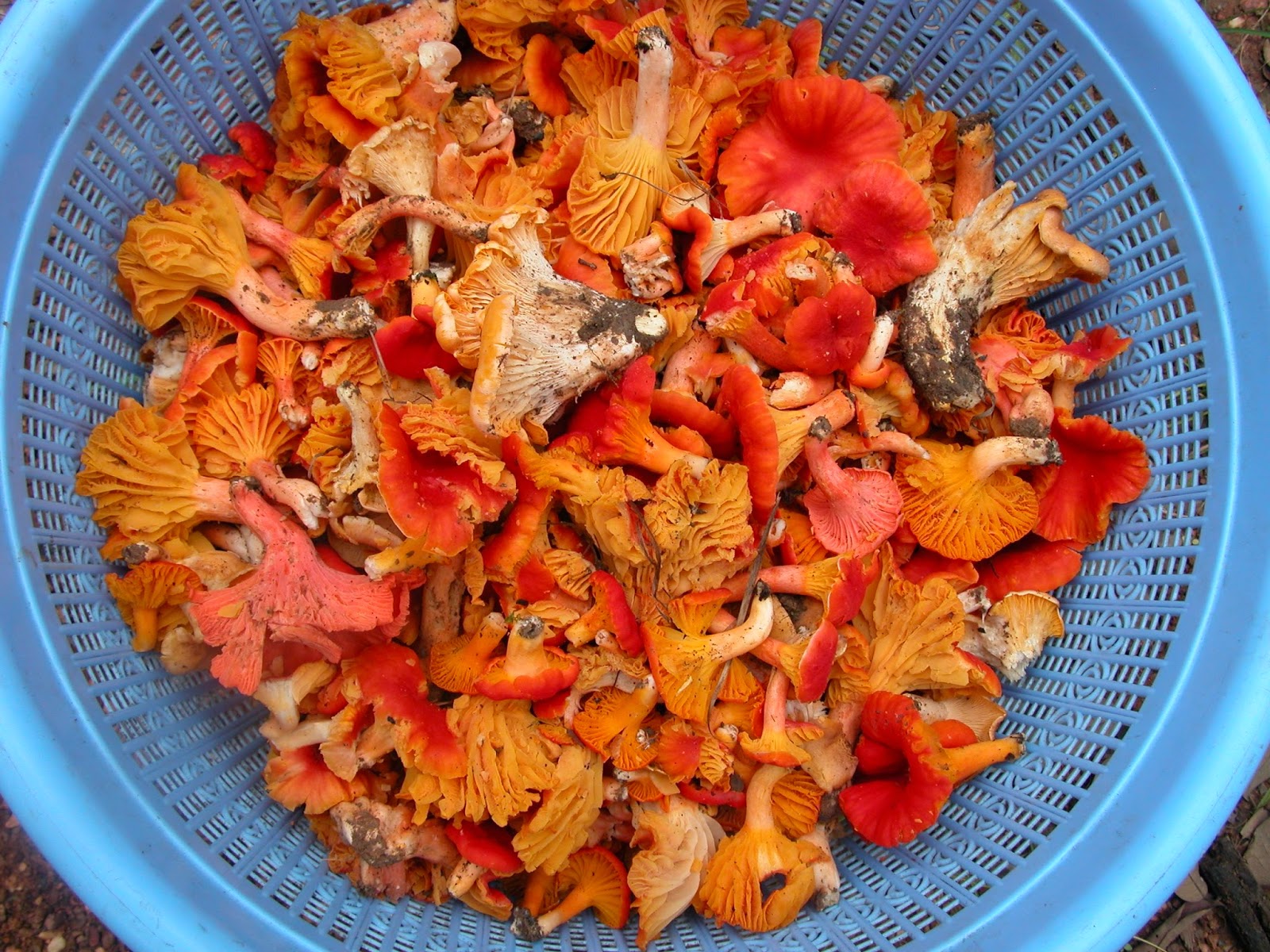One of the goals of the project is to
complete the provisional list of edible mushrooms which are to be found in the
primary forest ecosystem.
All together there are three types of
edible mushrooms that have commercial potential.
 Mycorrhizal
mushrooms which live in symbiosis with trees. Without these trees these mushrooms cannot be
cultivated e.g. chanterelle (Cantharellus). These are present in the neighbouring country
of Burundi but only have a limited potential.
Mycorrhizal
mushrooms which live in symbiosis with trees. Without these trees these mushrooms cannot be
cultivated e.g. chanterelle (Cantharellus). These are present in the neighbouring country
of Burundi but only have a limited potential.
 Saprotrophic mushrooms, species which take their nutrients from dead or rotting wood. Some species can be cultivated such as Pleurotus, Lentinus, Auricularia and Agaricus. For some species we know for certain that
they can be found in Rwanda or that there is a strong likelihood that they are
present in this country. Indigenous
varieties of Pleurotus are known or suspected
to be present in Rwanda. Ready to become
the Oyster mushrooms (Pleurotus) out
of the Rwandan forests, for example.
Saprotrophic mushrooms, species which take their nutrients from dead or rotting wood. Some species can be cultivated such as Pleurotus, Lentinus, Auricularia and Agaricus. For some species we know for certain that
they can be found in Rwanda or that there is a strong likelihood that they are
present in this country. Indigenous
varieties of Pleurotus are known or suspected
to be present in Rwanda. Ready to become
the Oyster mushrooms (Pleurotus) out
of the Rwandan forests, for example.
Interesting because they are best adapted
to the local environmental conditions and thus offer a better return. The famous shiitake (Omphalotaceae); from the
genus Auricularia, the Judas ear,
that is used a lot in Chinese cuisine; and from the genus Agaricus, most know in the West for the ordinary kitchen
mushroom. In each of these genera we
expect to find new species and varieties with local potential.
 The
species of the genus Termitomyces, a symbiont that lives in association with termites in their termite hills. Species
of Termitomyces
are present everywhere in Rwanda, but because of the very specific relationship
it forms with the termites, they have never been cultivated with success. A species of special interest could be Termitomyces
microcarpus. Called locally as ‘imegeri’; a species that
is highly prized by the local population. T. microcarpus grows on the outside
of the termite hills so it could be technically possible to cultivate. If this succeeds, there is most certainly a
market for this delicacy.
The
species of the genus Termitomyces, a symbiont that lives in association with termites in their termite hills. Species
of Termitomyces
are present everywhere in Rwanda, but because of the very specific relationship
it forms with the termites, they have never been cultivated with success. A species of special interest could be Termitomyces
microcarpus. Called locally as ‘imegeri’; a species that
is highly prized by the local population. T. microcarpus grows on the outside
of the termite hills so it could be technically possible to cultivate. If this succeeds, there is most certainly a
market for this delicacy.
No comments:
Post a Comment